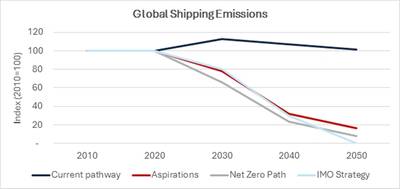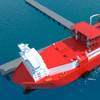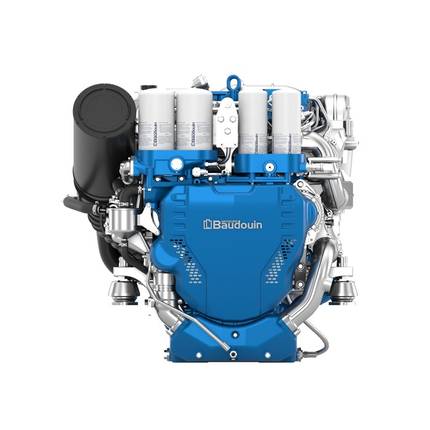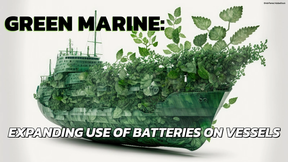Batteries Use in Vessels - Current Situation, Future Prospects
On the current pathway, global shipping greenhouse gas (GHG) emissions are forecast to rise in this decade and eventually return to 2010 levels by ~2050.
The chart represents the three scenarios for shipping emissions developed by the International Energy Agency (IEA) and adds in the IMO Strategy targets for emissions reduction. The IEA’s aspirational case (i.e. what governments and companies aspire to do rather than are actually doing – that is the current pathway) closely mirrors the IMO’s 2023 updated strategic direction. The challenge is clear to see - the gap between current actions and the overall ambition to reduce emissions from shipping.
Foundation for Change
The foundation for “going green” is the 2023 IMO Strategy on Reduction of GHG Emissions from Ships which aims to reduce the carbon intensity of international shipping by at least 40% by 2030 and increase the use of zero or near-zero emission fuels to account for 5-10% of the energy used by ships by 2030. The ultimate aspiration of the strategy is to achieve net zero GGH emissions in international shipping by or around 2050. Interim targets include reducing well-to-wake emissions by at least 20% by 2030 and by at least 70% by 2040 versus 2008 baseline. It should be noted that the aspirations are an agreed strategy but many of the mechanisms and rules for achieving these targets are being negotiated at the IMO’s working group.
DNV has been following and reporting on the alternative fuels segment for many years and reports that over 99% of the current operational fleet operates on conventional marine bunker. In terms of the order book, vessels featuring alternative fuels (LNG, LPG, methanol, ammonia and hydrogen) account for ~17% of energy carriers. Both conventional and alternative fuel segments record vessels with battery energy storage systems.
Drilling Down into Battery Energy Systems
There are slightly more than 1,000 battery vessels in operation and a further ~550 are currently on order. Battery energy storage systems (BESSs) deployed in for a variety of reasons:
- Low and zero emission operations, using electricity as an alternative energy carrier to MGO and liquid energy carriers that produce well-to-wake emissions.
- Peak shaving: BESSs support the efficient and optimal loading of internal combustion engines and can help smooth out engine load peaks recorded during short-term additional power requirements.
- Spinning reserve: A BESS can replace combustion engine capacity by providing a spinning reserve, which means they can be an instantaneous back-up system supporting the stable supply of electrical power during critical operations.
For additional insights on the future of Batteries in the Maritime Space, watch the interview with Philip Lewis, Director of Research, Intelatus, on Maritime Reporter TV:















